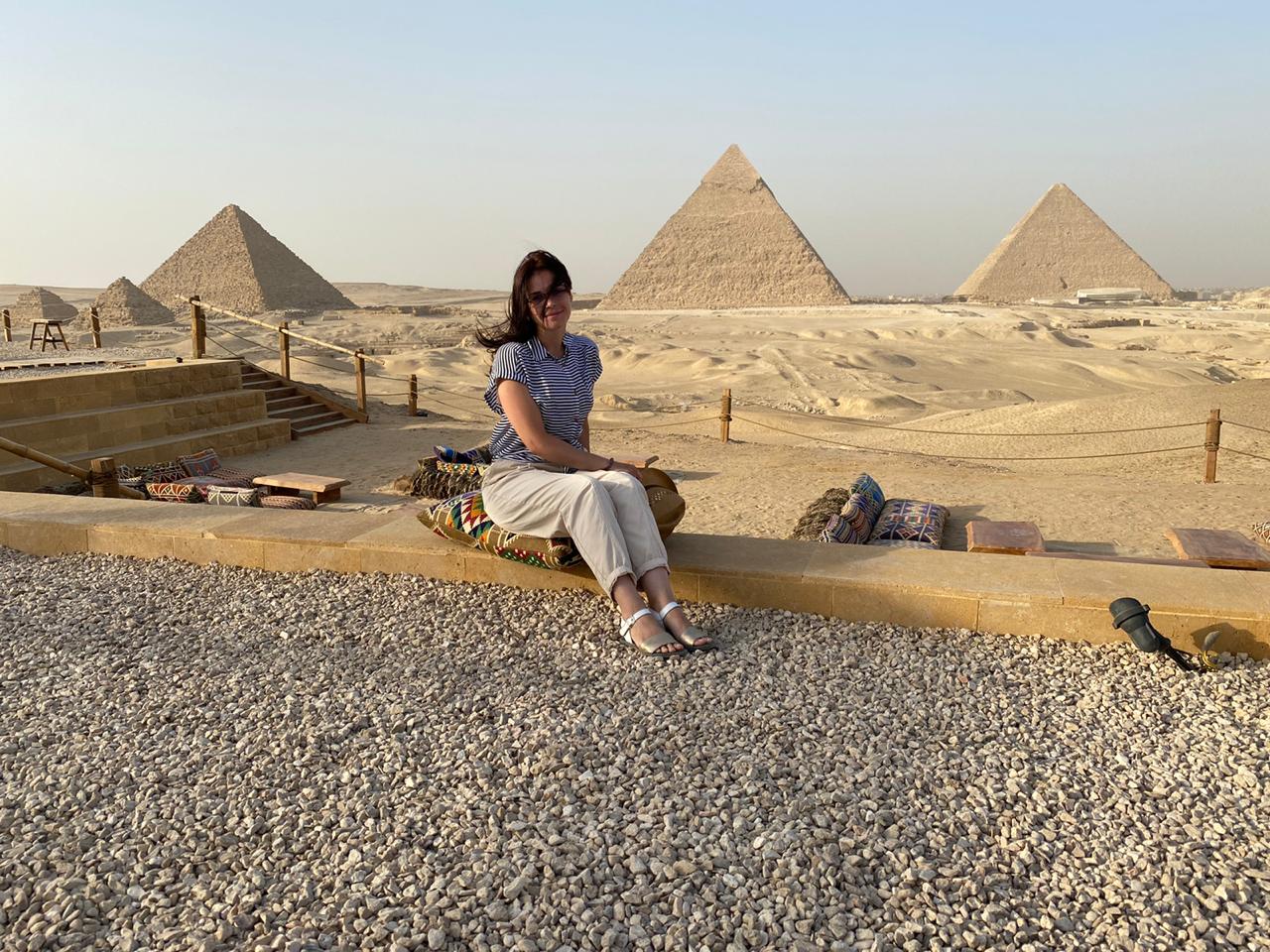A transparent plastic tent decorated with an Egyptian flag erected over a couple of blankets is the highlight of the photography exhibition held in Abdul Latif Jameel Hall at the American University in Cairo.
The tent is identical to the many that were set up in Tahrir Square, sheltering protesters for 18 days during the 25 January revolution.
“The exhibition is very realistic. If the ground was asphalt like the street was, I would have surely felt I am in Tahrir Square with the tent and all,” said Yara Sakr, an AUC student.
The gallery features around 90 photographs by ten photographers to tell the story of the revolution. The photographs are taped to the walls in what appears to be an improvised fashion; some hang from a rope in the middle of the gallery.
Slogans repeated during the revolution are painted on the gallery walls–“Put your head up … you are Egyptian”; “We want freedom and equality”; “The army and the people are one." They recall the language of the revolution in graffiti, its most prominent art form. Huge Egyptian flags hang from the gallery ceiling to the floor.
Shams Friedlander, the gallery's creative director, said he didn't want to frame or arrange the photographs in a typical way. Instead, he wanted to recreate the atmosphere in Tahrir–taping them on the walls and making an installation with stones on the ground.
"We just want an environment that people could come in and have a little feeling," Friedlander said.
Heba Khalifa, a participant and a photographer for the newspaper Al-Shorouk, said she liked the natural display of the photos, but thought it would work better in a bigger area so people could walk through wider passages. Khalifa contributed two pictures — one of a family holding a one-year-old child and the other a banner asking Mubarak to resign.
Randa Shaath, another Al-Shorouk photographer, said that the photographers hoped to tell the full story of the revolution.
“We ten photographers selected, from the many photographs we took during the revolution, the best pictures in order to create a full chronology of the events in Tahrir, beginning with the first protests and police attacks, to sit-ins and funerals," Shaath said.
David London, Assistant Professor in the AUC Journalism and Mass Communication Department, said he is currently organizing a gallery himself. He expressed admiration for the photographers.
“Some of the pictures actually leave you speechless. The courage of the people involved is really astounding to me,” London said.
Thomas Hartwell, an AUC photography professor, contributed 24 photographs. Hartwell said that selecting 90 pictures from 500 submissions was not easy.
“Tahrir was different on different days. Some days there were peaceful demonstrations, some days attacks, so we tried to include pictures from the different situations that came together in the square,” he said.
On 3 April, in the middle of the exhibition, musician Laila Bahgat played the oud and sang national songs, adding to the revolutionary spirit in the gallery.
“I live on Tahrir Square and heard many of the national songs that were being played during the revolution, so I am singing here to create the same patriotic mood as was in Tahrir square,” she said.
The exhibition, organized by the Department of Journalism and Mass Communication, is open from Sunday 3 April to Thursday 5 May from 10 am to 5 pm.




